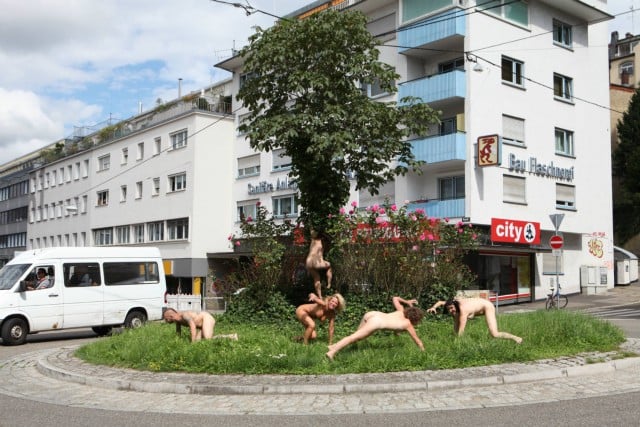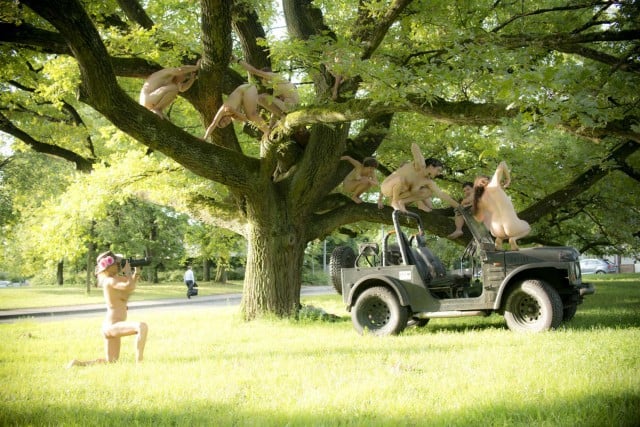Stuttgart was subject to a naked takeover on Sunday during one of several photo shoots which have taken place in the southern city throughout the summer.
The takeover was part of an artistic campaign involving students and professors from Kunstakademie Stuttgart posing au naturel in various public locations for a calendar which aims to lay bare environmental and social issues in the city.
“We think in the end, people would certainly be much better off if they went running around together in the bushes more often, instead of being stuck in a traffic jam,” the organizers Justyna Koeke and Marie Leinhard told The Local.
 Artists pose on a roundabout in the city. Photo: Stuttgart Under Construction.
Artists pose on a roundabout in the city. Photo: Stuttgart Under Construction.
The art students described their project as a reaction to Stuttgart's numerous construction sites and “constant traffic stress”. The capital of Baden-Württemberg is one of the most polluted cities in the country despite being in the only German state lead by the Green Party.
“We set about finding more freedom, more nature, more humanity” in a world which is increasingly conservative and controlled, the artists told The Local.
There is certainly a lot of humanity visible in these photos, with a distinct lack of clothing in any of the scenes.
Last year the artists similarly created a naked calendar centred around the city's many building sites. But for this project, they wanted to show “the wild side of Stuttgart”.
The team from the Kunstakademie imitated various wild animals by climbing over the parks and green areas in the city and getting as close to nature as possible.
Koeke and Leinhard feel “Stuttgart has a fine, long-standing naked tradition,” while they also point out that “animals don't wear clothes”.
The artists say they hope the calendar will raise questions about whether normal citizens can have a say in the development of their city, rather than just big investors.
But they also just want to “make people laugh because naked people are pretending to be giraffes between the cars, or monkeys climbing in the trees.”
 Kessel-Safari artists monkeying around in a tree in Stuttgart. Photo: Stuttgart Under Construction.
Kessel-Safari artists monkeying around in a tree in Stuttgart. Photo: Stuttgart Under Construction.
Residents of Stuttgart should be prepared for further “wild animal” sightings next week as the final three photos for the Kessel-Safari calendar are set to be shot then.



 Please whitelist us to continue reading.
Please whitelist us to continue reading.